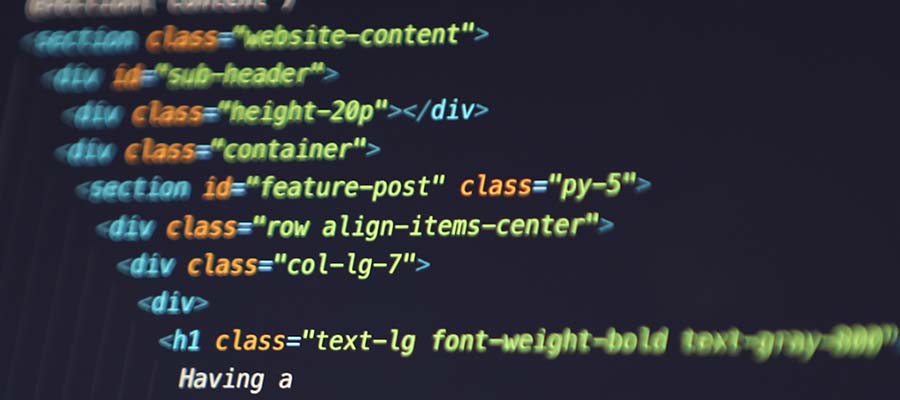I’m still fascinated by all aspects of the 1990s. Coming of age during the decade is a big reason why. But there’s more to the story.
The 90s were also a golden age for technology as well. The personal computer made its way into the mainstream. And so did the World Wide Web. As such, I started toying with web design during this period.
Building a website in those days was undeniably different. The web design industry was nascent – if it existed at all. Standards and best practices were still years away. Web designers had to adapt existing tools for this new medium.
We made a lot of mistakes. But that’s OK. The lessons learned in that era have brought us to the present.
What was it like to build a website back in the day? Here are a few observations based on my experiences. One obstacle does stand in my way, though. I hope that I can remember that far back!
Web Design without a Map
I first began experimenting with HTML in 1995. The web was very much a novelty. Thus, few organizations had a website.
Web designers had no history to work from. We couldn’t, for example, find previous examples of successful websites. And there were no guides to tell us the ingredients of a great site.
That lack of precedent had benefits. We had the freedom to try all manner of designs and layouts. There were no trends to follow. With that came the chance to establish our own.
There were some downsides, though. We didn’t account for factors like accessibility. Websites from that era had all manner of issues. Poor color contrast, tiny fonts, and intense animation were among them.
We made things up as we went along. And that philosophy covered every aspect of a website.

Tools? What Tools?
Where would we be without web design tools? From code editors to prototyping, they help us work more efficiently.
The right tools are essential for modern web design. But early web designers had no such luxury. There were very few apps aimed at this new medium.
My toolbox consisted of a plain text editor (Windows Notepad) and a graphics app (MS Paint). Not exactly a dynamic duo for web design. But repurposing apps was common.
Even Photoshop was ill-equipped in those days. Its “Save for Web” feature wasn’t introduced until version 5.5. That meant large file sizes and little optimization.
Plus, helpful features like code hinting weren’t yet available. There were no frameworks to provide a quick start to projects. That meant manually writing code.
There were also few references for learning HTML. A handful of extraordinarily thick books existed. But the best way to learn was by viewing the source code of other sites. This technique also came in handy when CSS and JavaScript hit the scene.

Managing Content was a Hassle
We’ve become accustomed to using content management systems (CMS) like WordPress. But such apps were still years away from mainstream availability.
In the beginning, every page was a separate HTML file. Website navigation consisted of links to these files. As you might expect, there were also links within the page content.
Large websites could get incredibly complex. For example, my first job was working on a newspaper’s website. It grew from a handful of pages to over a thousand.
Ensuring that every link worked was like wrestling a giant squid. Changing the navigation was also a challenge. You might have to make the same edit to every file on the site. The advent of Server Side Includes (SSI) eventually simplified the process.
You also had to consider the site’s file structure. Everything was built from the ground up. Consistent file locations and naming conventions were vital. I came up short on a few occasions. But that’s how you learn!
Planning for future growth was essential. Otherwise, you may end up having to refactor the entire thing.

Technology Was Exciting, but Limited
As I mentioned, the 90s were a transformative time for technology. It seemed like computers were changing the world daily.
There were still some limiting factors, however. The computers of the day had little processing power. Graphics were also paltry compared to today’s standard. And we can’t forget the painfully slow internet speeds.
It’s a good thing websites were simple. Users didn’t have the necessary tools to view anything large or complex. Using a 28.8 kbit/s modem, it would take nearly 5 minutes to download a 1MB file. And that’s assuming a stable connection.
These technological limitations presented a challenge to web designers. Using large images was out of the question. Audio and video content had to be highly compressed. And a lack of standard formats meant relying on third-party software like Flash or Real Player.
None of this stopped designers from implementing poor practices. Some websites added “features” like background audio and proprietary code (thanks, Internet Explorer).
Oh, and if you haven’t experienced dial-up internet, the following video offers a great demonstration.
We Had No Idea What the Web Would Become
The web’s novelty wore off within a few years. It slowly became a necessity for all types of organizations. And the audience had grown beyond hardcore computer geeks.
The seeds of online commerce were beginning to take root. Even so, I had no idea how big the web would become. And I couldn’t foresee the impact of smartphones and wireless internet.
But it’s worth remembering that things didn’t start that way. The 1990s version of the web seems light-years away from the present.
Little did we know that our experiments would lead to something bigger. A platform that adopted standards and developed trusted techniques. Not to mention methods for interacting with data in real-time.
Maybe the web is a better place in terms of technology. But it couldn’t be more fun than it was back in the day. It was amazing to witness.
Related Topics
Top